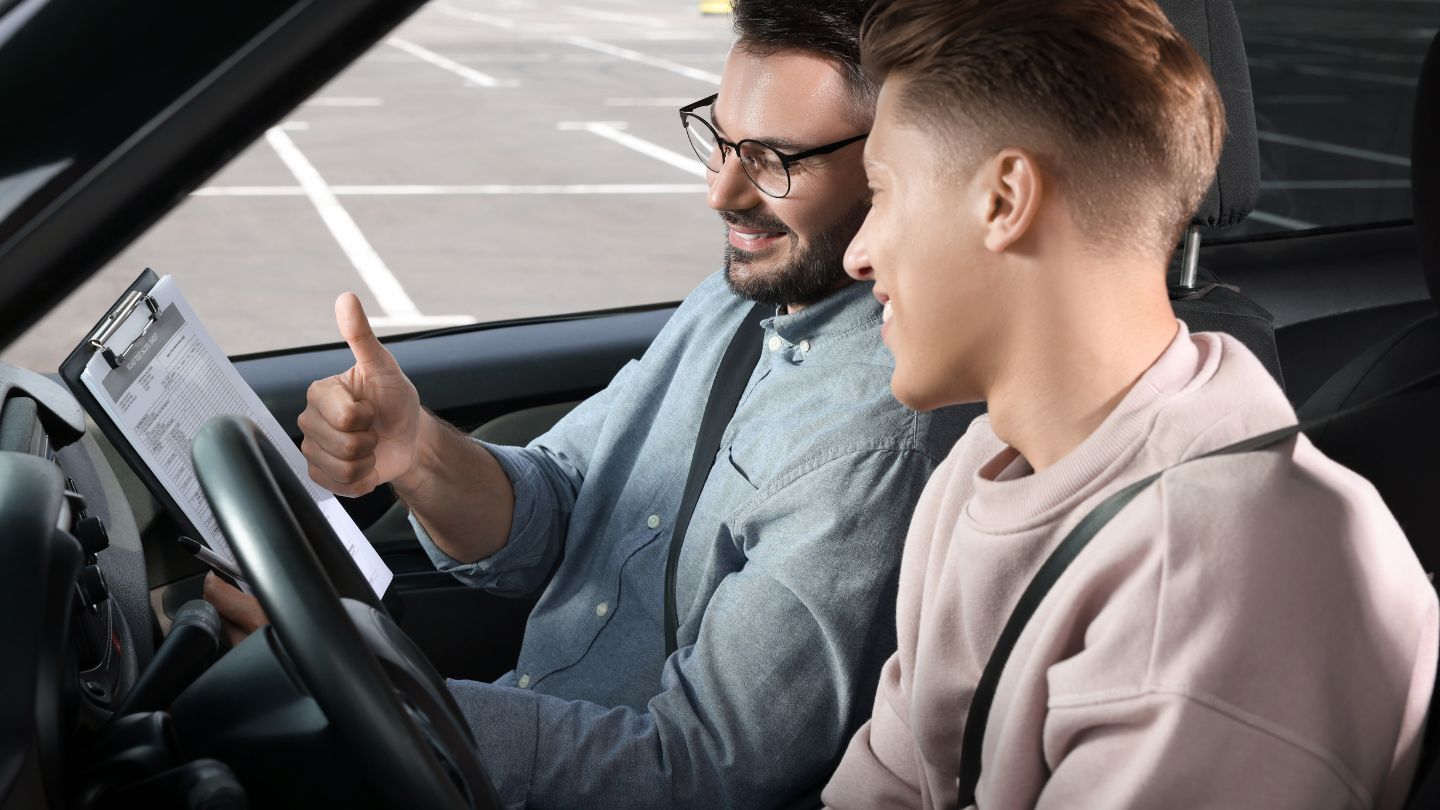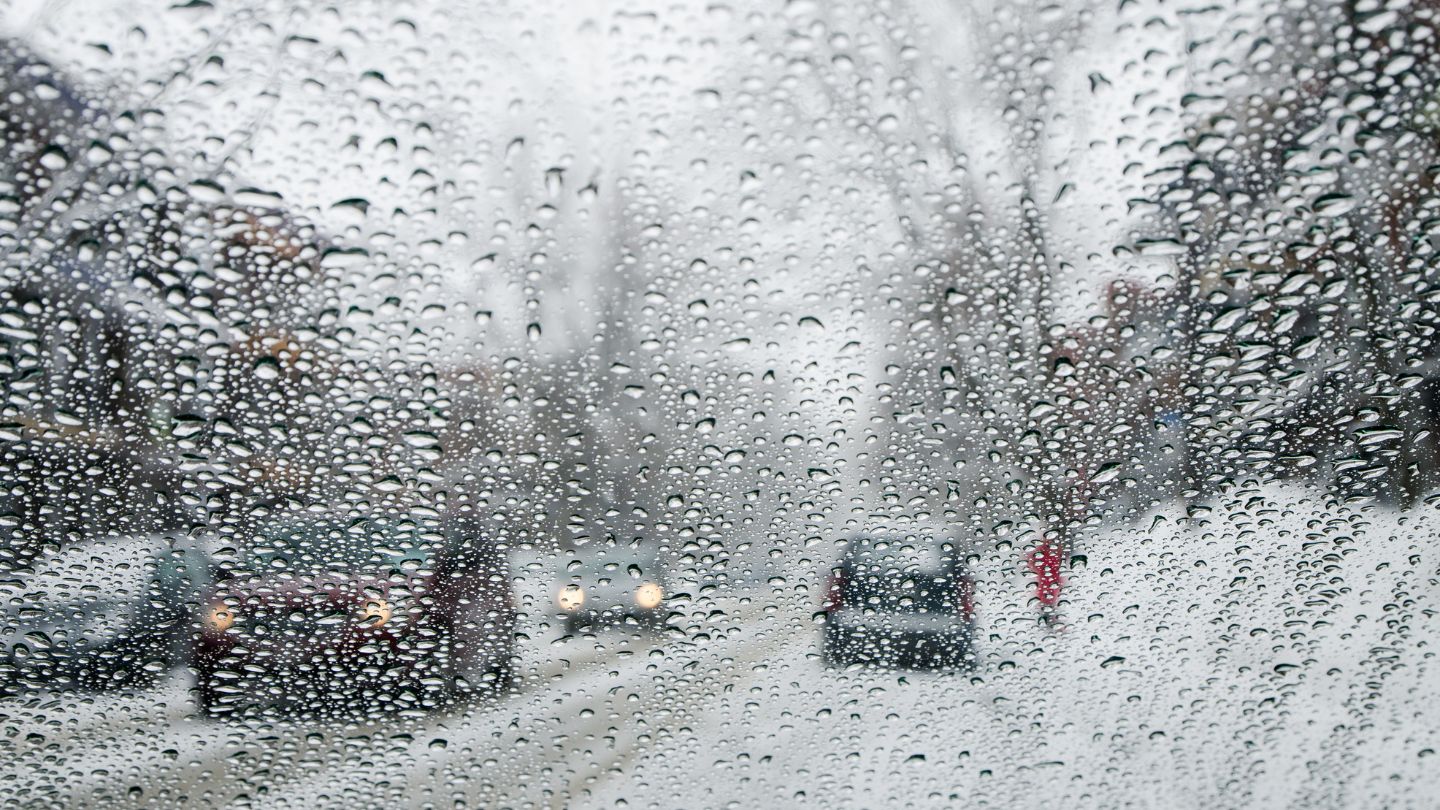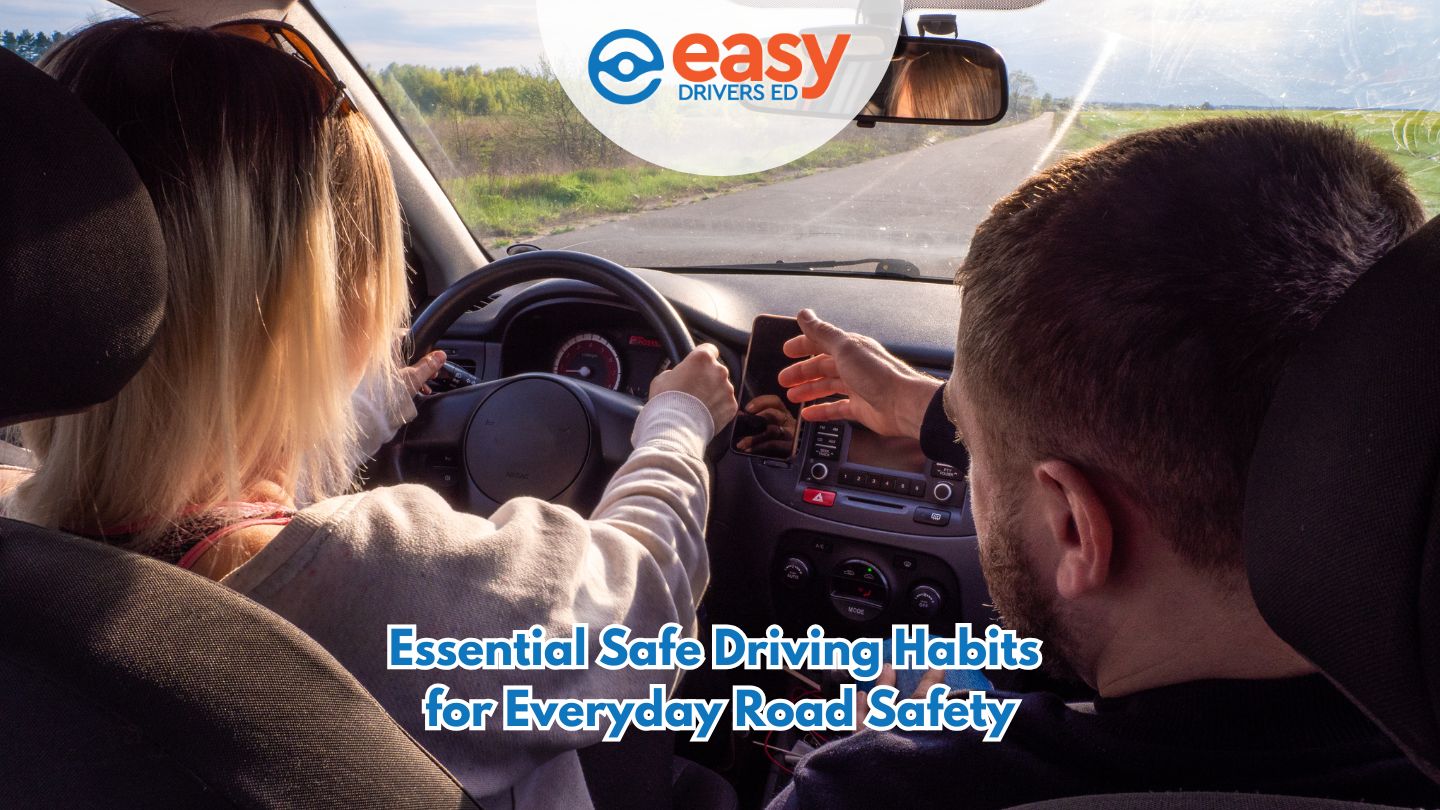Safe driving habits are vital for preventing accidents and ensuring everyone’s safety on the road. In this blog, you will find practical tips on vehicle maintenance, staying focused while driving, and practicing defensive driving. Adopting these habits will help you drive more safely and responsibly.
Key Takeaways
- Regular vehicle maintenance, including checks on brakes, tires, and lights, is essential for safe driving and can help prevent accidents.
- Always wearing a seat belt is crucial for minimizing injury risk in accidents, with statistics showing its usage saves thousands of lives each year.
- Distracted driving, which includes using phones and multitasking while driving, significantly increases crash risks; drivers should maintain focus and avoid distractions.
Perform Regular Vehicle Checks
Regular vehicle maintenance is crucial for safe driving habits. By keeping your car in top condition, you can prevent unexpected breakdowns and accidents. Focus on regularly inspecting your brake pedal, brakes, and tires, as these are essential for avoiding collisions and ensuring proper handling.
Check your vehicle’s lighting systems, such as headlights and turn signals, to ensure visibility and communication with other drivers. An intact windshield is vital for clear visibility and preventing crashes. Regular inspections help avoid dangerous situations on the road. Maintaining optimal engine performance is also important. Neglecting oil changes can lead to severe engine damage and unexpected failures. Incorporating these maintenance tasks into your routine enhances safety and prepares your vehicle for various road conditions.
Always Wear Your Seat Belt
Wearing a seat belt is one of the simplest and most effective ways to protect yourself during a car accident. Seat belts can reduce the risk of fatal injuries by up to 45% for occupants of passenger vehicles. Despite this, many people neglect to buckle up, especially on short trips or in familiar areas. However, accidents can happen anywhere, so it’s crucial to wear your seat belt every time you drive.
In 2017, seat belts saved nearly 15,000 lives, and an additional 2,500 fatalities could have been avoided if everyone had used them. As of 2023, the national seat belt usage rate is around 91.9%, indicating room for improvement. Making it a habit to always wear your seat belt not only protects you but also sets a positive example, encouraging safer driving habits in society.
Avoid Distracted Driving

Distractions while driving are a major cause of car accidents, but adopting safe driving habits can help prevent these incidents. Common distractions include using a cell phone, adjusting the radio, and eating while driving. These activities divert attention from the road and significantly increase the risk of accidents.
Handling your phone while driving quadruples your accident risk. If something requires your immediate attention, it’s best to pull over safely rather than multitasking. Focusing solely on the road ahead enhances your ability to anticipate sudden stops or obstacles, promoting safer travel.
To minimize distractions, keep both hands on the steering wheel and stay focused on navigating traffic. Secure your cell phone out of reach to avoid temptation until you arrive safely. Implementing these measures enhances cautious driving and contributes to safer roads for everyone.
Follow Speed Limits
Speed limits are essential for road safety, as speeding contributes to 29% of traffic-related deaths. Driving above speed limits increases accident risk and severity. Adhering to speed limits isn’t just about following rules; it’s crucial for safer driving. Even driving 10 mph over the limit can significantly raise crash risks. Respecting speed limits fosters a secure driving environment.
Safe driving is about protecting lives, not just avoiding fines. Lower speeds give drivers more time to handle unexpected situations, reducing crash incidents. By consistently following speed limits, you practice defensive driving, enhancing vehicle control and contributing to overall road safety.
Read more: How Much Can You Pay for Speeding in Texas?
Maintain Safe Following Distance
Maintaining a safe following distance from the car ahead is crucial for preventing accidents and allowing ample time to react to sudden changes on the road. The three-second rule is a helpful guideline to ensure sufficient space between your vehicle and the one in front. Choose a stationary object on the road; once the car ahead passes it, ensure at least three seconds before your vehicle reaches the same point.
In challenging conditions like poor weather or nighttime driving, increase your following distance to six seconds for added safety. Adhering to these distances enhances reaction time when facing unexpected situations, contributing to safer roads for all.
Practice Defensive Driving

Defensive driving involves being prepared for and responding to the unpredictable actions of other drivers while staying alert to potential road hazards. By adopting this proactive approach, you can significantly reduce the risk of car accidents and promote safer driving habits. Defensive drivers consistently monitor their surroundings and are ready to adjust to sudden maneuvers by others, such as unexpected stops or lane changes.
Defensive driving courses teach drivers how to predict and handle various road hazards. These programs are beneficial for drivers of all skill levels, as they focus on improving vehicle control and reducing collisions.
Below are some key defensive driving techniques to enhance your safety on the road.
Stay Alert and Aware
Staying alert and aware while driving is crucial for anticipating potential hazards and maintaining safe driving habits. Continuously scanning the road ahead for 20 to 30 seconds helps identify issues early, allowing for timely responses. Using mirrors effectively reduces blind spot risks and enhances road safety. By regularly checking mirrors and staying aware of surrounding vehicles, you maintain a secure driving environment for everyone.
Yield and Give Way
Yielding and allowing others to proceed is crucial for avoiding collisions and maintaining a secure driving environment. At intersections, defer to other vehicles, even when you have the right of way. This approach not only prevents mishaps but also promotes smooth traffic flow.
Yielding goes beyond mere compliance with traffic rules; it embodies defensive driving principles that protect all road users. Being courteous by giving way when needed contributes significantly to creating a safer and more harmonious driving environment.
Keep Calm and Avoid Aggression
Keeping calm and avoiding aggressive reactions are crucial for making smart decisions on the road. If you encounter an aggressive driver, it’s important to stay composed and not retaliate. Staying calm helps maintain control and focus, both key to safe driving.
When discussing safe driving with teenagers, a calm and respectful approach fosters an environment for sharing valuable tips and encouraging positive behavior behind the wheel. This enhances road safety for everyone.
Be Extra Cautious in Bad Weather

Navigating through bad weather demands increased caution and adjustments to your usual driving habits. Slowing down allows for better control and safer braking distances on slippery surfaces, reducing the risk of accidents.
During adverse weather, extend the gap between your car and the vehicle ahead beyond the standard three-second rule. This extra space provides more time to react to sudden stops, minimizing collision risks. Using headlights in low visibility conditions improves your view and ensures other drivers can see you.
In foggy conditions, use fog lights instead of high beams, which can reflect off fog particles and worsen visibility. Avoid driving through flooded areas; it’s safer to turn back. By adapting your driving to the weather, you ensure a safer journey.
Never Drive Under the Influence
Driving under the influence of alcohol or drugs significantly increases the risk of car crashes. Traffic-related deaths could drop by 24% if people avoided driving after drinking. Alcohol impairs reaction time, motor skills, and decision-making, making driving extremely dangerous.
Fatal road incidents are more frequent during weekends, particularly on Friday and Saturday nights. In the U.S., over 30% of deadly car crashes involve alcohol-impaired drivers, highlighting the severe impact of drunk driving on road safety. To prevent such outcomes, consider using a taxi service or designating a sober driver.
Educational campaigns and strict penalties for drunk driving can deter risky behavior behind the wheel. By making responsible choices and avoiding impaired driving, you directly contribute to safer roads for everyone.
Avoid Driving Drowsy
Drowsiness while driving significantly increases the risk of car accidents. Fatigue impairs vigilance and response to traffic changes, heightening the chance of veering off course.
To combat drowsy driving, aim for six to eight hours of sleep regularly. On long trips, take breaks every two hours or 200 kilometers to stay alert. If you feel sleepy, pull over for a rest or let an alert companion drive.
A short 20-minute nap in a safe, well-lit area can help alleviate tiredness. Avoid relying solely on caffeine, as its effects are inconsistent and temporary. Prioritize rest and take necessary breaks to mitigate the risks of fatigued driving for safer travel.
Use Turn Signals Properly
Using turn signals is a key part of driving safely, allowing you to communicate your intentions to other drivers. Failing to use them contributes to around two million crashes annually in the U.S., highlighting their importance for road safety. Drivers should signal at least 100 feet before turning and maintain signals for at least five seconds when changing lanes on highways.
Signaling is crucial even in parking lots. Making it a habit, even when no other cars seem present, promotes safe driving habits. Consistent signaling helps prevent collisions and ensures smoother traffic flow.
Watch Out for Other Drivers
Always anticipate the unexpected from other drivers while keeping an eye on the road ahead, watching for pedestrians, cyclists, and animals. Stay alert for sudden stops, tailgating, erratic lane changes, or turns without signaling.
Looking 50 to 100 yards ahead helps you spot potential hazards early and react accordingly. Be extra cautious around pedestrians, especially in bad weather. By staying vigilant and predicting other motorists’ actions, you can navigate traffic safely and avoid accidents.
Plan Your Route
Plan your trip to reduce stress and enhance travel enjoyment. Know your destination, choose your route, and check the weather for a smooth drive. Before starting, adjust your seat, mirrors, and temperature settings to minimize distractions. Mapping your journey beforehand helps avoid unexpected detours and keeps you focused on the road, promoting safer driving habits.
Take Defensive Driving Courses

Defensive driving courses are designed to enhance a driver’s skills, making them safer and reducing the likelihood of car accidents. These courses teach drivers to anticipate and respond effectively to potential road hazards, thus improving overall road safety.
Participating in a defensive driving course not only boosts your driving skills but may also offer benefits like reduced insurance rates and help in removing points or citations from your driving record. Investing time in such training is a step towards safer driving for everyone.
Keep Emergency Supplies
Being prepared for unexpected situations is crucial for safe driving. Your vehicle’s emergency kit should include essentials like a first-aid kit, road flare, a flashlight with extra batteries, jumper cables, water, and a phone charger. These items help address common roadside issues and ensure safety if your vehicle breaks down.
Adding a blanket provides warmth during colder months. Flashlights are essential for visibility in low-light conditions, and a basic toolkit with duct tape can offer temporary fixes for roadside problems. Materials like sand, salt, or cat litter can aid traction on slippery surfaces. Keeping an emergency kit in your car ensures readiness for unforeseen events, protecting both driver and passengers.
Summary
Integrating essential, safe driving behaviors into your everyday driving routine can significantly reduce the risk of car accidents and enhance your overall driving experience. Regular vehicle maintenance, consistent seat belt use, avoiding distractions, and adhering to speed limits are critical practices for ensuring road safety. Embracing defensive driving techniques, remaining cautious in adverse weather, and refraining from impaired driving are vital habits that every motorist should adopt.
EasyDriversEd offers a comprehensive range of resources designed to promote safe driving habits. With a focus on defensive driving strategies and responsible road conduct, our programs are tailored to equip drivers with the knowledge and skills necessary for safer navigation on the roads. Our expert instructors provide top-notch online education aimed at transforming individuals into more proficient and cautious vehicle operators.
Prioritize your safety on the road by enrolling in our Texas adult driver education program. Contact Easy Drivers Ed to explore our offerings and take the first step towards becoming a more skilled and responsible driver. Stay vigilant and always consider the safety of yourself and your fellow travelers.

